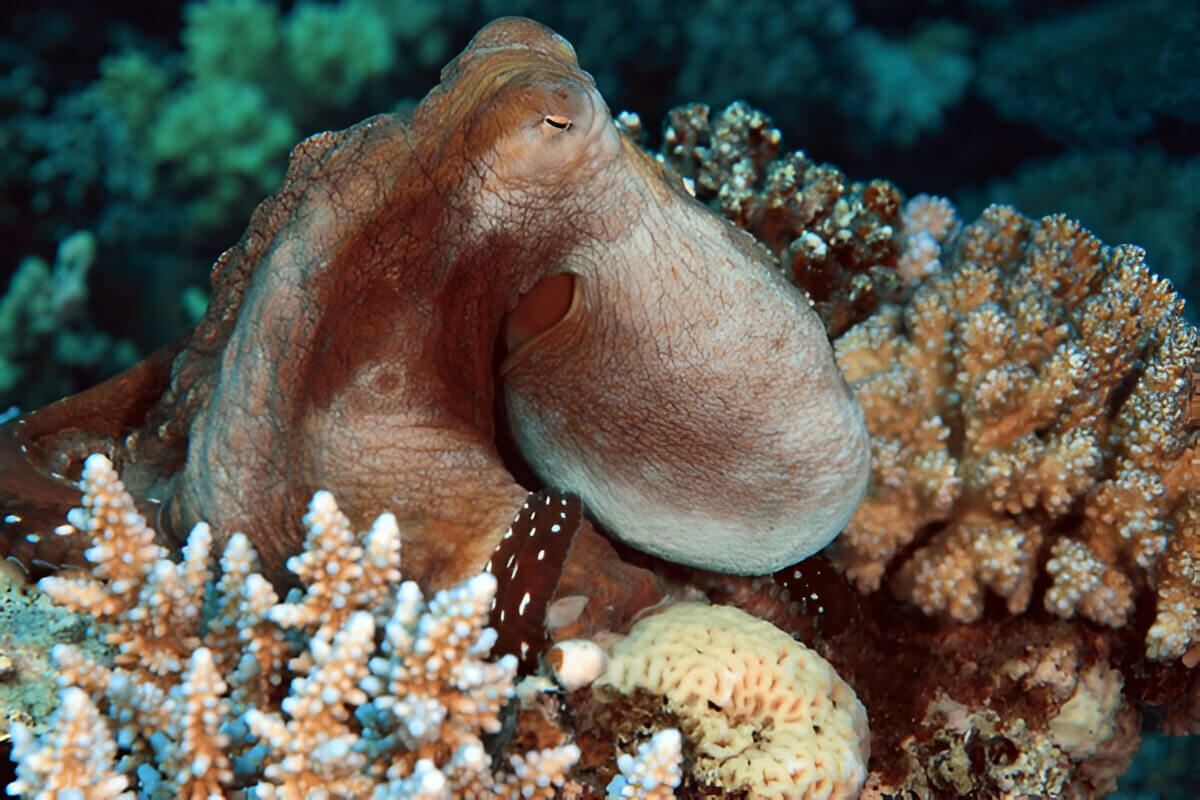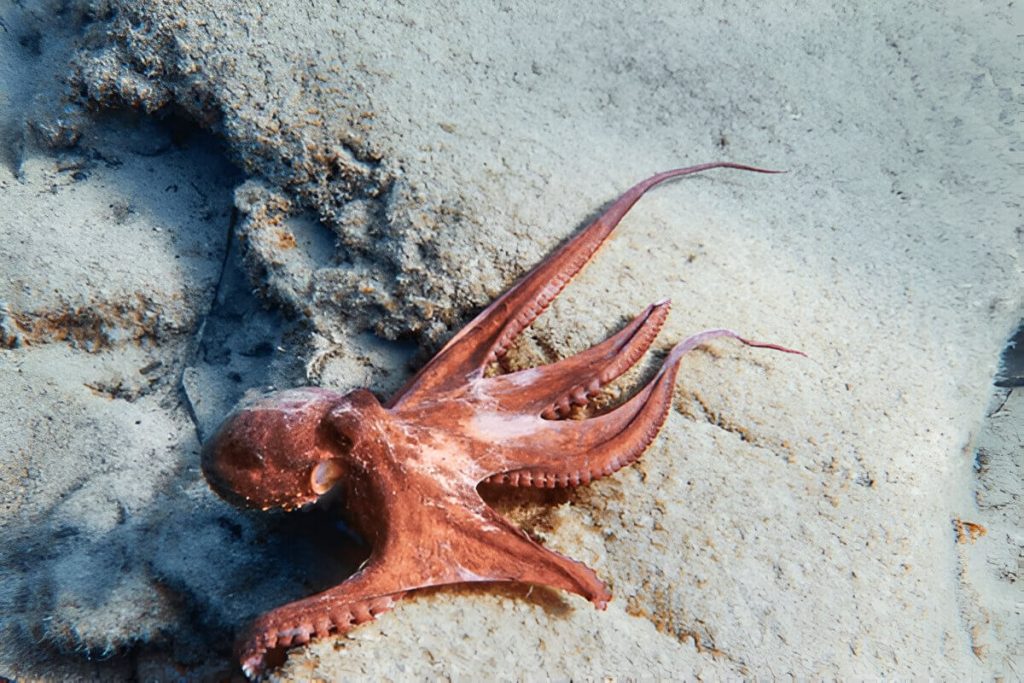
The octopus, a marvel of marine biology, has one of the most intriguing nervous systems. This cephalopod’s multiple brains contribute to its intelligence and complex behaviors. We explore its decentralized nervous system, examining how each brain controls movements and actions. This provides insights into the octopus’s problem-solving abilities and potential applications for robotics and AI inspired by nature. Join us as we unravel this fascinating creature’s neurological prowess.
Understanding the Octopus Anatomy
The octopus is a fascinating marine creature, renowned not only for its intelligence but also for its unique anatomical features, particularly its nervous system. Unlike most animals with a centralized brain, the octopus boasts a highly decentralized nervous system that sets it apart in the animal kingdom.
Central to octopus anatomy is the cephalopod brain structure, which is remarkably complex and sophisticated. The octopus has about 500 million neurons, comparable to that of many mammals. However, what truly distinguishes them is the distribution of these neurons: only about a third are located in their central brain while the remaining two-thirds are distributed throughout their arms.
This decentralized system allows each arm to operate semi-independently, capable of performing tasks and responding to stimuli without direct input from the central brain. This autonomy enables an octopus to multitask with remarkable efficiency, while one arm explores a crevice for food, another can be engaged in opening a shellfish.
The unique features of octopuses extend beyond just their neural architecture; their nervous system contributes significantly to their problem-solving abilities and adaptability in various environments. Understanding this aspect of octopus anatomy not only highlights the evolutionary ingenuity within cephalopods but also provides insight into alternative forms of intelligence beyond our own mammalian framework.
The Science Behind Multiple Brains in Octopuses

Octopuses are fascinating creatures, not just for their intelligence and adaptability but also for their unique neurological structure. Unlike most animals, octopuses have a decentralized nervous system, which raises the intriguing question: how many brains does an octopus actually have?
An octopus has a total of nine brains. The central brain is located between its eyes and is responsible for processing information and controlling overall behavior. However, each of the eight arms has its own mini-brain or ganglion that can independently control movement. This means that while the central brain provides general commands, each arm can operate autonomously to some extent, exploring environments, capturing prey, or even solving problems on its own.
This decentralized nervous system allows octopuses remarkable flexibility and coordination. It enables them to multitask efficiently; an arm can be engaged in one activity while another focuses on something completely different. This sophisticated neural setup not only contributes to their problem-solving abilities but also aids in their survival as they navigate complex underwater environments.
Understanding the science behind the multiple brains in octopuses offers valuable insights into neural architecture and evolution, providing inspiration for advancements in robotics and artificial intelligence where distributed processing is key.
The Functionality of Each Brain
The octopus is a fascinating creature, not just for its unique appearance but also for its complex nervous system. Unlike most animals, the octopus has a decentralized brain structure that sets it apart in the animal kingdom. This intriguing setup includes a central brain located between its eyes and smaller neural clusters, often referred to as “arm brains,” situated within each of its eight arms.
The central brain of an octopus is responsible for processing sensory information and coordinating higher-order behaviors. It acts as the command center, integrating data from the environment and making decisions based on that input. However, what truly sets octopuses apart is their arm brains. Each arm contains a significant concentration of neurons, about two-thirds of an octopus’s total neuron count resides in these appendages.
These arm brains allow for remarkable independent arm movement, enabling each limb to perform tasks without direct orders from the central brain. For instance, an octopus can manipulate objects or explore crevices with one arm while another searches elsewhere or holds onto something else entirely. This autonomy suggests that each arm operates with a degree of independence thanks to its localized neural network.
This decentralized system forms an intricate neural network in octopuses that supports both autonomous actions and coordinated efforts across all limbs when necessary. The combination of centralized control for complex decision-making and decentralized execution through individual arms showcases the evolutionary ingenuity behind the functionality of each brain within these intelligent cephalopods.
The Benefits of Having Multiple Brains for an Octopus
The octopus is a fascinating creature, not just for its unique appearance but also for its remarkable neurological structure. One of the most intriguing aspects of an octopus is its possession of multiple brains-nine, to be precise. This distinctive feature offers several advantages that contribute to the complex behaviors and problem-solving abilities observed in these cephalopods.
Each of the octopus’s eight arms has a mini-brain, or a cluster of nerve cells known as a ganglion, which allows it to operate semi-independently from the central brain located between its eyes. This decentralized nervous system means that each arm can explore and react to stimuli on its own, enabling multitasking and efficient interaction with their environment. For instance, while one arm might be busy prying open a shellfish, another could be exploring new terrain or investigating potential threats.
This autonomy in limb movement translates into sophisticated problem-solving abilities. Octopuses have been observed opening jars to retrieve food inside, a task that requires both dexterity and cognitive processing power. The ability to process information locally within each arm enhances their capability to perform such tasks efficiently without overloading their central brain with all sensory inputs.
Moreover, having multiple brains supports complex behaviors like camouflage and communication through body language. Each arm can independently change color and texture due to direct neural control over pigment cells called chromatophores. This allows for rapid adaptation to surroundings or signaling intentions without delay.
The advantages of having multiple brains are evident in the octopus’s ability to exhibit complex behaviors and advanced problem-solving skills. Their unique neurological setup not only highlights the evolutionary ingenuity of cephalopods but also provides fascinating insights into alternative forms of intelligence beyond our own centralized nervous system model.
Comparing the Octopus Brain to Other Marine Creatures’ Nervous Systems
When exploring the fascinating realm of marine biology, one cannot overlook the distinctiveness of the octopus brain compared to other marine creatures’ nervous systems. Cephalopods, particularly octopuses, boast a highly complex and sophisticated neural architecture that sets them apart from many of their aquatic counterparts. Unlike fish, whose nervous systems are often centralized with a brain and spinal cord similar to terrestrial vertebrates, octopuses exhibit a more decentralized system.
This cephalopod vs fish nervous system distinction is primarily due to the unique distribution of neurons in octopuses. Remarkably, over two-thirds of an octopus’s neurons reside in its arms rather than its central brain. This allows each arm to operate with a degree of autonomy, capable of performing tasks independently while still coordinating with the central brain for more complex actions.
Such neural sophistication contributes to the octopus’s reputation as one of the most intelligent sea creatures. Their ability to solve puzzles, navigate mazes, and even exhibit playful behavior underscores their cognitive prowess, traits that are less pronounced in most fish species.
These marine biology comparisons highlight how evolutionary paths have diverged within ocean life forms. While fish have developed efficient streamlined bodies for swimming and survival strategies suited for their environments, cephalopods like octopuses have evolved intricate nervous systems that facilitate problem-solving abilities and adaptive behaviors rarely seen in other marine life forms. Understanding these differences not only enriches our knowledge of marine ecosystems but also offers insights into the diverse strategies life employs to thrive beneath the waves.
The Implications for Robotics and AI (Learning from Octopus Intelligence)
The intriguing world of cephalopods, particularly octopuses, offers a fascinating blueprint for advancements in robotics and artificial intelligence. These creatures possess remarkable cognitive abilities and physical dexterity, making them an ideal subject for biomimicry in technology. By studying the unique characteristics of octopus intelligence, researchers are uncovering new ways to enhance AI systems and develop robotics inspired by nature.
One of the key features that makes octopuses so captivating is their decentralized nervous system. Unlike humans, whose brains control all bodily functions, octopuses have a significant portion of their neurons located in their arms. This allows each arm to operate semi-independently while still contributing to the creature’s overall coordination and decision-making processes. Robotics engineers are exploring this distributed model as a way to create more adaptable and resilient robotic systems.
AI inspired by cephalopods’ intelligence may also benefit from the problem-solving skills exhibited by these animals. Octopuses are known for their ability to navigate complex environments, manipulate objects with precision, and even exhibit playful behavior, all without relying on pre-programmed instructions. By integrating similar adaptive learning capabilities into AI systems, developers can create machines that better understand and interact with dynamic environments.
Incorporating biomimicry in technology not only promises advances in robotic autonomy but also encourages sustainable innovation by drawing inspiration from natural processes honed over millions of years. As we continue to learn from the marvels of cephalopod intelligence, we edge closer to realizing a future where robotics seamlessly integrates with human life, enhancing our capabilities while respecting the intricate balance found in nature.